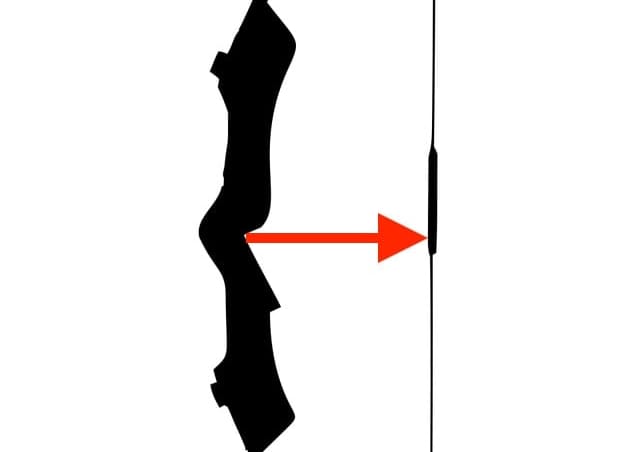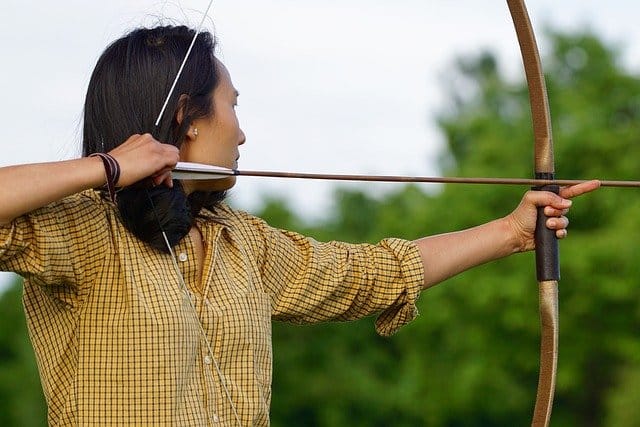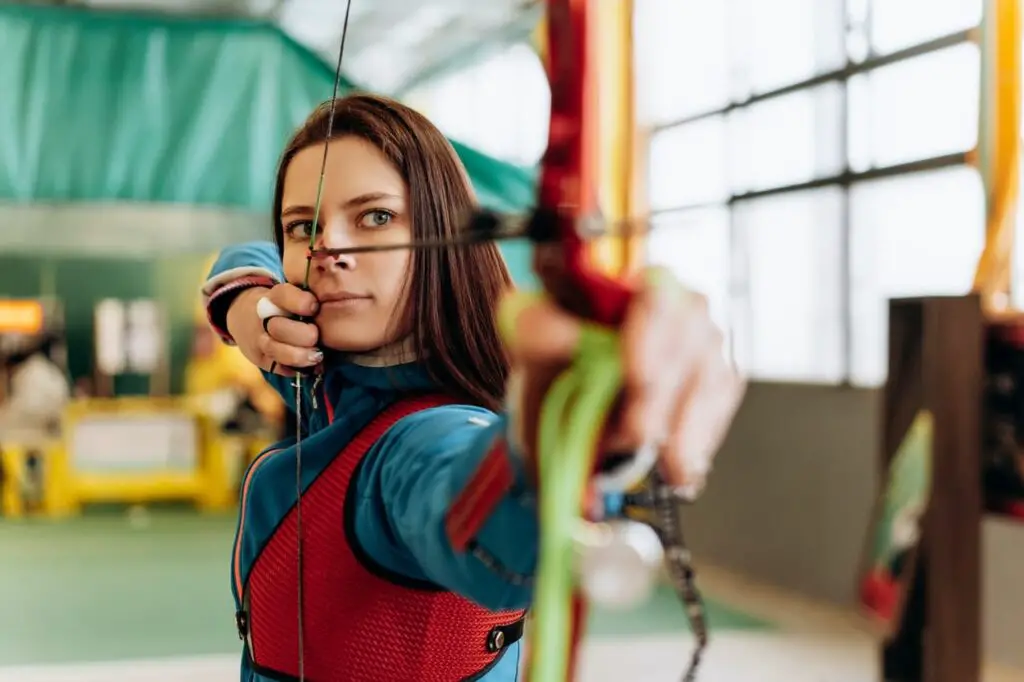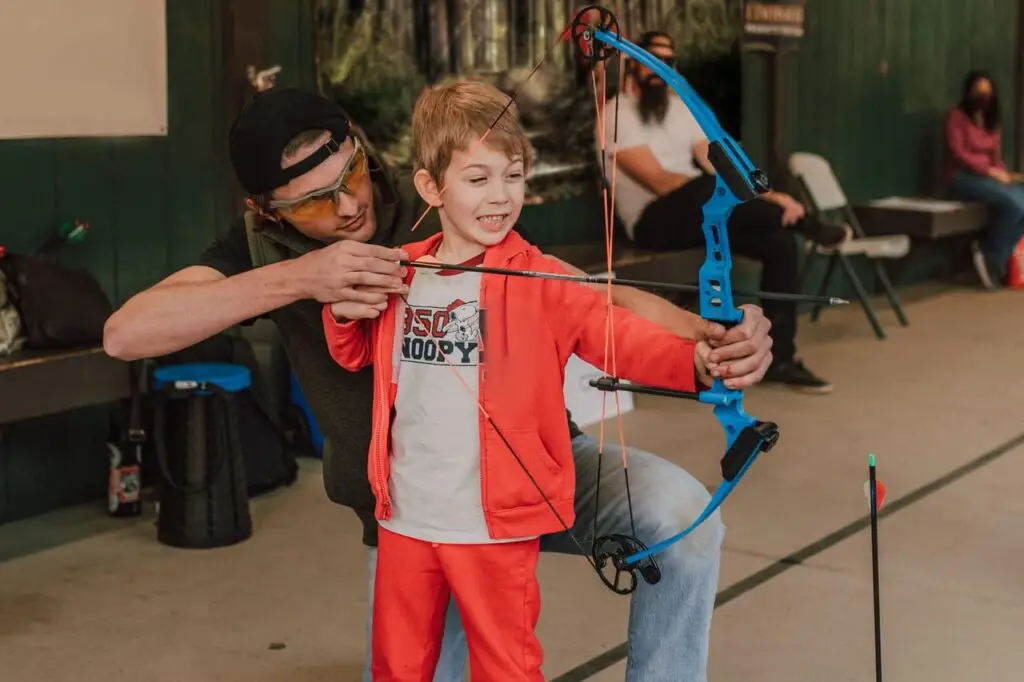A bow’s brace height is the distance between the deepest part of the bow’s grip (or the pivot point) to the resting bowstring and is usually preset based on the manufacturer’s recommendation. While you can leave the brace in its recommended position, it isn’t uncommon for archers to increase or even decrease their bow’s brace height to better suit their shot and the equipment. However, some will set the brace height too high, not knowing the consequences.
Shooting a bow with a brace height that is too high will significantly affect arrow speed and flight accuracy. As a general rule, higher brace heights decrease arrow speed but allow for a more forgiving shot. However, these effects are exacerbated when the brace is too high, causing a loud and erratic shot along with other unfortunate effects.
In this article, we will discuss what happens when an archer decides to shoot a bow with a brace height that is too high. We will also explain how you can determine the best brace height based on your bow type and other factors, and you’ll learn how to easily adjust this yourself.

Effects of a Bow Brace Height That is Too High
Although it might seem like a small factor, a brace height that is too high can significantly affect your shot as well as the integrity of your equipment.
The most common consequences of shooting a bow with a brace height that is too high are:
- Excessive noise
- Erratic arrow flight
- Decreased arrow speed
- Reduced shot accuracy
- Increased preload weight
Oftentimes, archers prefer to set their brace heights higher, rather than lower, because it usually makes the bow a bit more forgiving in terms of shot accuracy. This is partially due to the fact that increasing your bow’s brace height will also decrease your arrow speed. However, once the brace height becomes too high, your shot goes from forgiving to vastly inaccurate and your arrow’s speed decreases further, resulting in an erratic flight.
Altering your bow’s brace height will also alter the limb pad angles, and as you increase the height, so too does the preload weight on the limbs. This might make your bow more difficult to draw if the preload weight is higher than you’re used to handling.
The last effect might not be a huge priority for all archers but is exceptionally important for those who prefer to hunt with a bow. When you increase your bow’s brace height too high, it increases the vibrations made by your bowstrings, resulting in a significantly noisy shot that could scare away targets in the nick of time when you shoot.
After all, the speed of sound travels at 1,126fps (768mph) compared to a typical arrow speed of 350fps (239mph), resulting in the bow’s sound reaching any prey three times faster than the arrow. So, it’s safe to assume anything you’re hunting will have moved in some way the moment you released your arrow, resulting in an inaccurate, and potentially inhumane, shot.
How to Determine the Best Brace Height for Your Bow
As you can see by the list above, none of the results of an excessively high brace height are ideal, which is why it is important for any archer to know how to determine the best brace height for both them and their bow.
The best way to determine your bow’s ideal brace height is to check the brace height range recommended by the manufacturer. However, if you acquired your bow second-hand and/or it did not come with this information, you can measure this range yourself using a T-square or a bow square. You’ll then test points within that range for the position where you shoot best.
If you’re using a T-square or bow square to measure your brace height, you would measure from the pivot point (deepest point of your grip) to your bowstring. Of course, this doesn’t give you an accurate range to work within. Fortunately, you can usually determine a reasonable brace height or range based on the type of bow you have.
For example, if you have a recurve bow, you can refer to these recommendations:
| Bow size | Brace height |
| 62-to-64-inch bow | 7 ½ to 8 ½ inches |
| 66-to-68-inch bow | 8 to 9 inches |
| 70-to-72-inch bow | 8 ¾ to 9 ½ inches |
Modern compound bows have different recommended brace heights depending on their purpose. For instance, a compound targe bow used specifically for precision should have a brace height over 7 inches (ideally 8-9 inches) versus compound bows used for hunting will typically have brace heights ranging from 5-7 inches.
Longbows are another popular bow type, and these hefty bows can be particularly tricky to find the perfect brace height due to their size. For these bows, the ideal brace height is about 1/12th of the bow’s total length.
While you can do a bit of trial and error around these measurements and within these ranges, remember that any manufacturer-provided brace height is going to be the best for your bow, particularly more modern compound and recurve bows. So, if you decide to alter the brace height on these bows, try not to stray too far from what the manufacturer has recommended.
Do you know what the difference between a compound bow and a recurve bow is?
How To Adjust Bow Brace Height
Now that you know relatively what your bow’s brace height should be, it’s time to alter the brace’s position to match. This is especially crucial considering brace heights can slide out of position and should be checked before every shooting session.
Altering a bow’s brace height is simple. First, remove your bow stringer and bowstring. Next, slip off the bottom loop of your bowstring and twist the string in the direction you need to either raise or lower your brace height. To increase brace height, you will twist your bowstring so it tightens, creating a shorter bowstring. You would do the opposite to decrease your brace height and create a longer bowstring. Two or three twists will often result in 1/4th of an inch of length.
Once you have the ideal bowstring length, replace your bow’s loop and bow stringer to check the brace height, and make any necessary adjustments.
Final Thoughts
When it comes to your bow’s brace height, it is never ideal to have one that is too high, or even too low. This could result in an extremely loud and inaccurate shot, and, if the brace height is too low, it could even damage your bow. Therefore, it is important to learn how to measure and adjust your bow’s brace height early on, so you exactly what height allows the most accurate shot, ideal speed, and other important factors.


